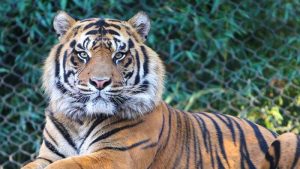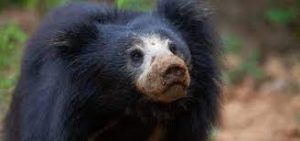Today’s Current Affairs: 31st Jan 2024 for UPSC IAS exams, State PSC exams, SSC CGL, State SSC, RRB, Railways, Banking Exam & IBPS, etc
Table of Contents
Kashmiri Saffron:

As per recent reports Kashmiri saffron, can be the new silver.
- Selling now at ₹3.25 lakh per kg, this sought-after condiment from Kashmir is costlier than precious metal.
- Saffron production has long been restricted to a limited geographical area in the Union territory of Jammu & Kashmir.
- Pampore region, in India, commonly known as Saffron bowl of Kashmir, is the main contributor to saffron production.
- The unique characteristics of Kashmir saffron are its longer and thicker stigmas, natural deep-red colour, high aroma, bitter flavour, chemical-free processing, and high quantity of crocin (colouring strength), safranal (flavour) and picrocrocin (bitterness).
- In India, saffron Corms (seeds) are cultivated during the months of June and July and at some places in August and September.
- It is known for medicinal properties such as lowering blood pressure, treating anemia, migraines, and aiding insomnia.
- Possesses cosmetic benefits, enhancing skin quality, reducing pigmentation, and minimizing spots.
Idate Commission:

The National Human Rights Commission (NHRC) emphasised the importance of executing the recommendations of the Idate Commission report.
- NHRC organized an open house discussion on the Protection of Nomadic, Semi Nomadic and De-Notified Tribes in India and forward trajectory.
- Idate Commission established in 2014 which was Headed by Bhiku Ramji Idate.
- Objective is to compile a statewide catalogue of Denotified, Nomadic, and Semi-Nomadic Tribes (DNTs).
- In May 2018, the National Commission for Denotified Nomadic and Semi-Nomadic Tribes, submitted its report.
- The commission was constituted for a three-year temporary term.
- It had to submit its report identifying these communities state-wise, assessing their development status, and recommending ways to uplift them.
- The report has called Denotified Nomadic and Semi-Nomadic Tribes poorest of the poor, most marginalised and most downtrodden communities who are subject to social stigma, atrocity and exclusion.
- The commission has recommended giving protection to Denotified Nomadic and Semi-Nomadic Tribes in the communities under the Atrocities Act.
- The Idate Commission has recommended a Constitutional amendment so that Scheduled NT/ DNT/ SNT can be added as a third category after Scheduled Castes and Scheduled Tribes in the Act.
- Assign individuals not identified in the SCs/STs/OBCs list to the OBC category.
- Create a permanent commission with legal standing for the DNTs, SNTs, and NTs.
- Form a distinct department to address the welfare of these communities in states with significant populations.
- Undertake a thorough survey of DNT families to determine their estimated numbers and distribution.
Rare Golden Tiger In Kaziranga National Park : Image

A wildlife photographer captured a rare golden tiger in Kaziranga National Park (KNP).
- Golden tigers (also known as a golden tabby tiger) are a colour form, not a separate subspecies, like white and black tigers.
- They are exceptionally rare in the wild and even rarer in captivity.
- Golden tiger spotted in KNP are a color variation of Bengal tigers caused by a recessive gene called “wideband”.
- This gene affects the production of black pigments during the hair growth cycle.
- Tigers typically exhibit three colours: black, orange, and white. In the golden tiger, the black colour is absent, and the orange appears faded.
Kaziranga National Park:
- Formed in 1908 KNP is located in the edge of the north eastern part of the country in the district of Golaghat and Nagoan in the state of Assam.
- It was declared as a National Park in 1974.
- In the year 1985, the park was declared as a World Heritage Site by UNESCO and was declared as Tiger Reserve in 2006.
- It is the single largest undisturbed and representative area in the Brahmaputra Valley floodplain.
- KNP has mainly four types of vegetation’ like alluvial inundated grasslands, alluvial savanna woodlands, tropical moist mixed deciduous forests, and tropical semi-evergreen forests.
Martyrs’ Day 2024:

Martyrs’ Day, also known as Shaheed Diwas, is observed on 30th January each year to pay homage to the brave souls who sacrificed their lives for the freedom and welfare of the nation.
- One of the most significant events associated with this day is the Punyatithi (death anniversary) of Mahatma Gandhi, the Father of the Nation.
- “Death is at any time blessed, but it is twice blessed for a warrior who dies for his cause, that is, truth” – Mahatma Gandhi
- Also, Martyrs’ Day is also commemorated on 23rd March to remember the sacrifice of three extraordinary revolutionaries of India – Bhagat Singh, Shivaram Rajguru, Sukhdev Thapar.
Very Dense Fog In Few State : IMD

The India Meteorological Department (IMD) issued a warning about a strong probability of “very dense fog” in Haryana, Chandigarh, and Delhi.
- IMD has also accompanied alerts with maps from the INSAT 3D satellite, and sometimes from the INSAT 3DR satellite.
- The IMD uses INSAT -3D and INSAT-3DR satellite data for weather forecasting/monitoring purposes.
- INSAT-3DR, similar to INSAT-3D, is an advanced meteorological satellite of India configured with an imaging System and an Atmospheric Sounder.
- An atmospheric sounder measures how the physical properties of a column of air vary with altitude.
- It has several infrared channels from longwave to shortwave bands and one visible band.
- The significant improvements incorporated in INSAT-3DR are:
- Imaging in the Middle Infrared band to provide nighttime pictures of low clouds and fog.
- Imaging in two Thermal Infrared bands for estimation of Sea Surface Temperature (SST) with better accuracy.
E-Ink Displays:

With Paper-like screens, E-Ink displays like the Kindle are a pleasure to read on.
- E-Ink displays are a special type of screen technology often used in e-readers like the Amazon Kindle.
- The technology was originally developed in the 1990s at MIT and is now owned by E Ink Corporation.
- The screens work using tiny microcapsules filled with positively charged white particles and negatively charged black ones suspended in fluid inside the display.
- By applying positive or negative electrical charges to different areas of the screen, the white or black particles can be made to rise to the surface, creating the text and images on the display.
- Unlike LCD and LED displays that use a backlight, E Ink displays reflect light just like paper.
- This makes them easier on the eyes for long reading sessions.
- They also require very little power since they don’t need a backlight and only use energy when the image changes.
- The lack of backlighting also means that they are easier to read under brighter lighting conditions, which isn’t the case with LCD/LED displays at all legibility actually takes a hit under bright sunlight.
Exercise -Sada Tanseeq:

In a major boost of ties, the militaries of India and Saudi Arabia are conducting their first Joint Military Exercise named as Sada Tanseeq.
- Exercise Sada Tanseeq is the inaugural edition of India-Saudi Arabia Joint Military Exercise ‘SADA TANSEEQ’ commenced at Mahajan, Rajasthan.
- The Exercise is scheduled to be conducted from 29th January to 10th February 2024.
- Aim of the Exercise is to train troops of both sides for Joint Operations in Semi Desert terrain under Chapter VII of the United Nations Charter.
- The Exercise will enable both the sides to share their best practices in the tactics, techniques and procedures of conducting operations in sub-conventional domains.
- It will facilitate developing interoperability, bonhomie and camaraderie between troops from both the sides.
- The Exercise will involve Establishment of Mobile Vehicle Check Post, Cordon & Search Operation, House Intervention Drill, Reflex Shooting, Slithering and Sniper Firing.
- The Exercise will provide an opportunity to both the contingents to strengthen their bond.
Sloth Bear:

Karnataka has witnessed instances of human-sloth bear confrontations, raising concerns for both communities and wildlife enthusiasts.
- Sloth bear scientific Name: Melursus ursinus
- Sloth bears are one of the eight bear speciesfound across the world.
- They are myrmecophagous, meaning, they find bugs and termites to be their most sought-after meal.
- They live in a variety of dry and moist forestsand in some tall grasslands, where boulders, scattered shrubs and trees provide shelter.
- They have long, shaggy dark brown or black fur and curved claws, which are the longest out of any of the bear species.
- Conservation Status
- IUCN: Vulnerable
- Wildlife Protection Act, 1972: Schedule 1
Ratle Hydro Electric Project:

The government recently announced diversion of Chenab river water through diversion tunnels to expedite the 850-MW Ratle Hydro Electric Project in Jammu & Kashmir
- Ratle Hydro Electric Project is an 850 MW run-of-river hydroelectric power project being built on the Chenab River in the Kishtwar District of Jammu and Kashmir.
- The project is being developed by Ratle Hydroelectric Power Corporation (RHPCL), which was formed as a joint venture (JV) between Jammu & Kashmir State Power Development Corporation (JKSPDC) and India’s state-owned National Hydroelectric Power Corporation (NHPC).
- The project comprises a 133-metre-tall and 194.8-meter-long concrete gravity dam, a diversion dam, and an underground powerhouse on the right bank of the river.
Chenab River:
- It is a major river of India and Pakistan.
- It is formed by the confluence of two streams, Chandra and Bhaga, at Tandi in the upper Himalayas in the Lahaul and Spiti Districts of Himachal Pradesh.
- In its upper reaches, it is also known as the Chandrabhaga.
- It is a tributary of the Indus River.
INS Sumitra : Rescued Fishermen Hijacked By Pirates

INS Sumitra is the fourth and last Saryu-class patrol vessel of the Indian Navy.
- It is based on an indigenous design and constructed by Goa Shipyard Limited.
- It was commissioned in 2014 and is based in Chennai under the Eastern Naval Command.
- The primary role of the ship is to undertake surveillance of the country’s exclusive economic zone (EEZ) besides other operational tasks such as anti-piracy patrols, fleet support operations, maritime security of offshore assets, and escort operations.
- It Measures about 105 metres in length, 13 metres in breadth, and displacing 2,200 tonnes, the ship can achieve a speed of 25 knots.
- The ship has a range of 6,500 nautical miles.
- It is propelled by two diesel engines.
- The ship’s weapon and sensor outfits include a 76.2 mm gun (super rapid gun mount), close-in weapon systems, and the latest navigational and early warning radars.
- It is capable of embarking one Dhruv/Chetak helicopter.
- It is also equipped with two rigid inflatable fast-motor boats.
Generative AI : Report

A new report predicts that Generative AI (genAI) is poised to become a $100 billion industry by 2026.
- Generative AI, or generative artificial intelligence, is a form of artificial intelligence (AI) in which algorithms automatically produce content in the form of text, images, audio, and video.
- Unlike traditional AI systems that are designed to recognize patterns and make predictions, generative AI creates new content.
- Generative AI is powered by foundation models (large AI models) that can multi-task and perform out-of-the-box tasks, including summarization, Q&A, classification, and more.
- These systems have been trained on massive amounts of data.
- It works by using a Machine Learning (ML) model to learn the patterns and relationships in a dataset of human-created content.
- It then uses the learned patterns to generate new content.
- Typically, it starts with a simple text input, called a prompt, in which the user describes the output they want.
- Then, various algorithms generate new content according to what the prompt is asking for.
- ChatGPT is an AI-powered chatbot developed by OpenAI, with a unique ability to not only generate written content but also converse with users fluently.
- Bard is a generative AI chatbot created by Google, based on LaMDA language model technology.
- It can answer questions asked by users or create new content from text or image prompts.
Mitochondrial Coxiella Effector F(MceF):

Researchers recently discovered a previously unidentified protein named mitochondrial coxiella effector F (MceF) with antioxidant properties produced by Coxiella burnetii, a Gram-negative intracellular bacterium.
- Mitochondrial coxiella effector F (MceF) is a bacterial protein capable of keeping human cells healthy even when the cells have a heavy bacterial burden.
- It is produced by Coxiella burnetii, a Gram-negative intracellular bacterium.
- After invading host cells, Coxiella burnetii releases MceF into cells.
- MceF interacts with glutathione peroxidase 4 (GPX4), an antioxidant enzyme located in the mitochondria, to improve mitochondrial function by promoting an anti-oxidizing effect that averts cell damage and death, which may occur when pathogens replicate inside mammalian cells.




